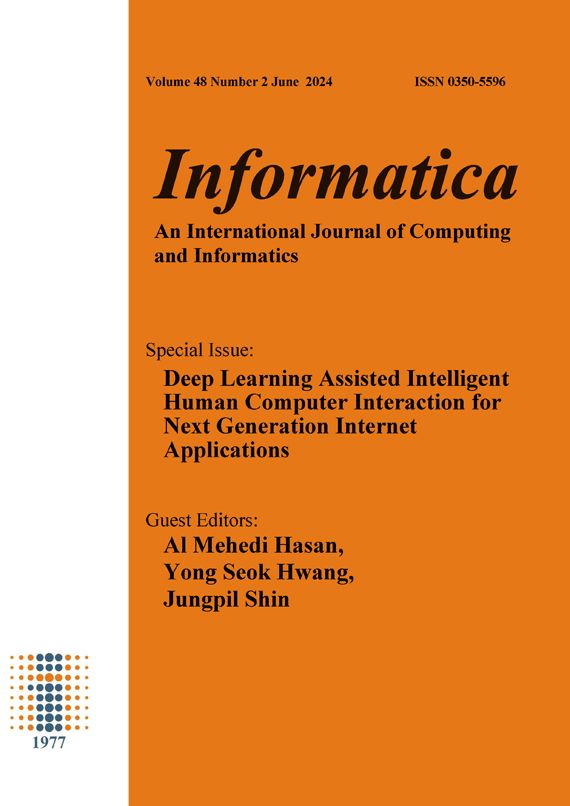DRG-Net: Diabetic Retinopathy Grading Network using Graph Learning with Extreme Gradient Boosting Classifier
DOI:
https://doi.org/10.31449/inf.v48i2.5078Abstract
Diabetic retinopathy (DR) is a leading cause of blindness that occurs in different age groups. So, the early detection of DR can save millions of people from blindness issues. Further, the manual analysis of DR requires much processing time and experienced doctors. Hence, computer-aided diagnosis (CAD)-based artificial intelligence models have been developed for an early DR prediction. However, the state-of-the-art methodologies are failed to extract the deep balanced features, which resulted in poor classification performance. Therefore, this work implements the DR grading network (DRG-Net) using graph learning properties. Initially, synthetic minority over-sampling technique (SMOTE) is applied on EyePACS and Messidor dataset to balance the instances of each DR class into uniform level. Then, a deep graph correlation network (DGCN) is applied to extract the class-specific features by identifying the relationship. Finally, an extreme gradient boosting (XGBoost) classifier is employed to perform the DR classification with the pre-trained balanced features obtained using SMOTE-DGCN. The obtained simulation results performed on the EyePACS dataset and the Messidor dataset disclose that the proposed DRG-Net resulted in higher performance than state-of-the-art DR grading classification approaches, with accuracy, sensitivity, and specificity of 99.01%, 99.01%, and 98.43% for the EyePACS dataset, respectively, and 99.6%, 99.08%, and 100% for the Messidor dataset.Downloads
Published
Issue
Section
License
I assign to Informatica, An International Journal of Computing and Informatics ("Journal") the copyright in the manuscript identified above and any additional material (figures, tables, illustrations, software or other information intended for publication) submitted as part of or as a supplement to the manuscript ("Paper") in all forms and media throughout the world, in all languages, for the full term of copyright, effective when and if the article is accepted for publication. This transfer includes the right to reproduce and/or to distribute the Paper to other journals or digital libraries in electronic and online forms and systems.
I understand that I retain the rights to use the pre-prints, off-prints, accepted manuscript and published journal Paper for personal use, scholarly purposes and internal institutional use.
In certain cases, I can ask for retaining the publishing rights of the Paper. The Journal can permit or deny the request for publishing rights, to which I fully agree.
I declare that the submitted Paper is original, has been written by the stated authors and has not been published elsewhere nor is currently being considered for publication by any other journal and will not be submitted for such review while under review by this Journal. The Paper contains no material that violates proprietary rights of any other person or entity. I have obtained written permission from copyright owners for any excerpts from copyrighted works that are included and have credited the sources in my article. I have informed the co-author(s) of the terms of this publishing agreement.
Copyright © Slovenian Society Informatika








